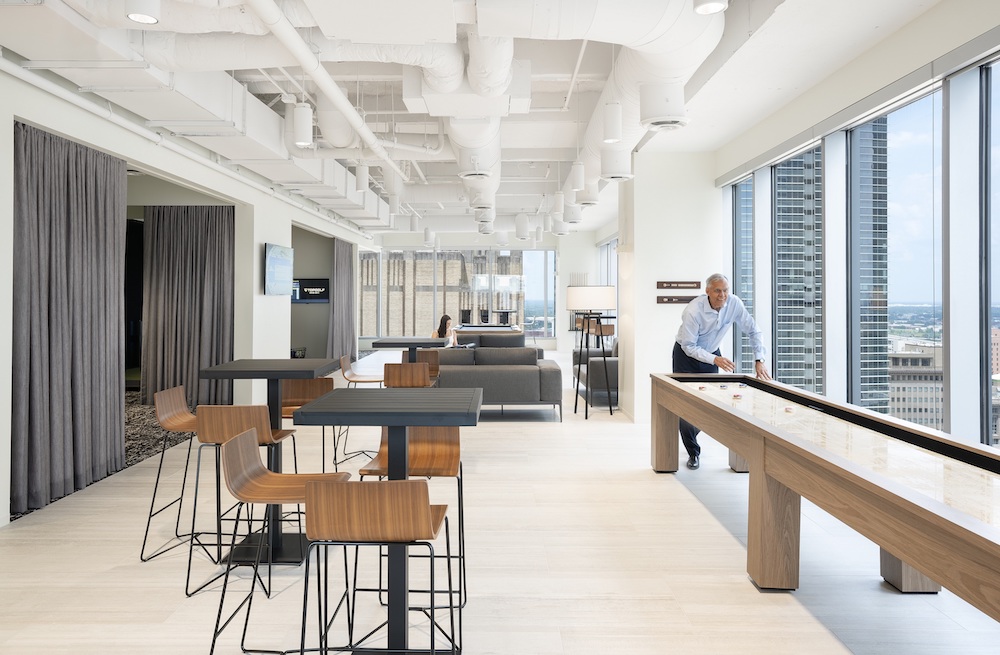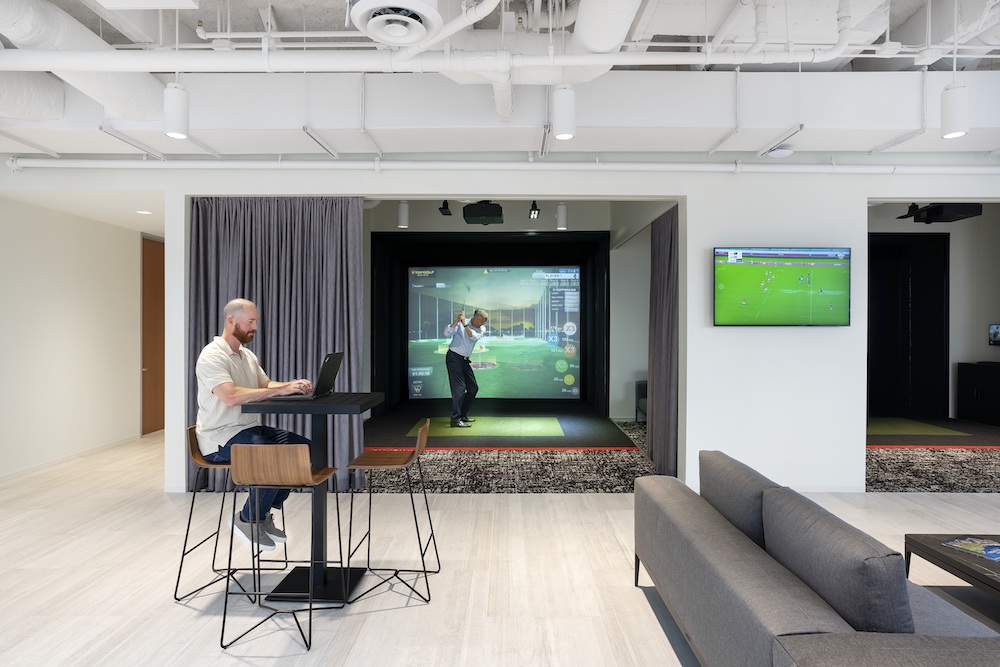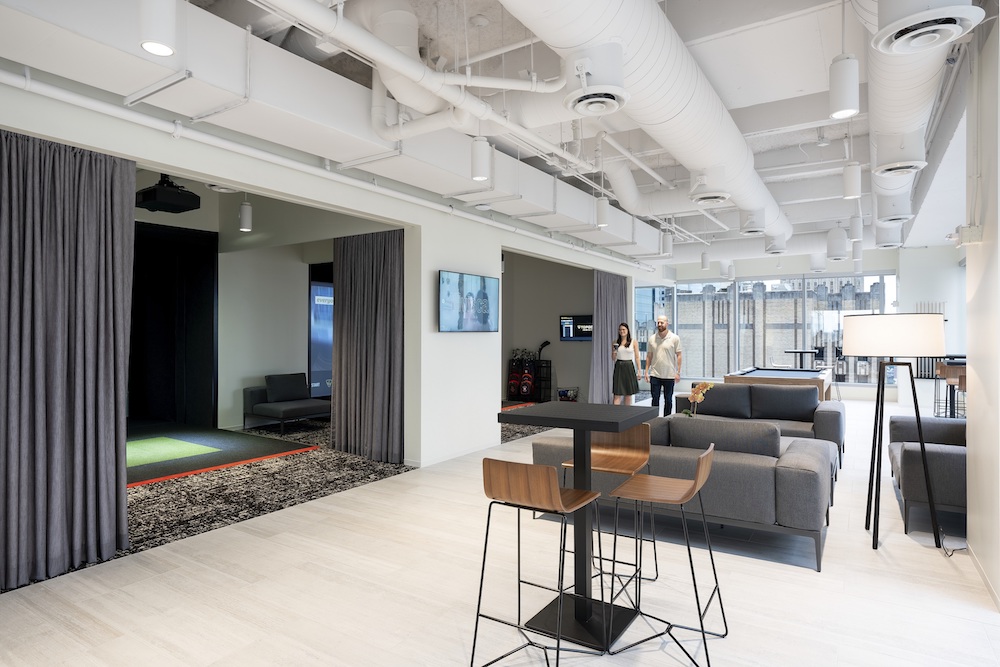Gensler’s Kenneth Wiesehuegel shares why designing the workplace with an employee-first mentality will be important in 2022.
– Stay tuned as we share more 2022 workplaces trends for the entire month of December –

The workplace has traditionally existed to support employees and their work. Although the design of the physical workplace is constantly evolving, one thing remains consistent – design matters to both current and future personnel. Designing the workplace with an employee-first mentality not only helps to recruit and retain talent but can also be a magnet to bring people back to the office now that hybrid work models and work-from-home lifestyles are more common.
It wasn’t long ago that the catchphrase “sitting is the new smoking” was coined and used to get people out of their chairs and moving, all with an eye toward better health and wellness. As a result, amenities were added to the office, including the addition of sit/stand desks, outdoor lounges, coworking spaces, and individual meditative or tech-free zones.

Creating Employee-First Spaces
In addition to providing employees with a break from their desks, research shows these designated areas provide significant value and a high return on investment. Findings from recent research indicated that high-performing workers consider different kinds of furnishings and locations other than their desks to be an “alternative work setting” – both in and out of the office. In fact, staff who occasionally work away from their desks are more effective and report a better experience.
Although incorporating various office amenities was trending pre-COVID, enduring a pandemic required the prioritization of personal health and wellness. Many landlords have used this as an opportunity to provide tenants with upgraded fitness facilities, some that are offered entirely free. To further personalize the experience, some employers have gone so far as to build their own exercise spaces.

Firms like Akin Gump in the Houston market created individual, bookable fitness suites outfitted with a personal changing area, shower, and various exercise machines, including treadmills, Pelotons, and touch smart fitness mirrors. This customized employee-first experience allows for a user to exercise before, during, or after work in complete privacy, never being seen in workout clothes by their colleagues.
In addition to offering curated fitness experiences, landlords are seeking to provide more amenity-rich areas to attract top tenants. Recently, the amenity level at 1000 Main in downtown Houston was redesigned to create a more flexible and social environment. The space features two Top Golf simulators, a pool table, a shuffleboard, and multiple TVs. Additional on-site amenities include a fitness center and training studio with automated spin and yoga classes. Nearby, Bank of America Tower and Houston Center were thoughtfully designed with outdoor spaces accessible for all tenants to experience the outdoors, whether it be by having lunch, exercising, or enjoying time away from their daily work.

Not only do well-designed workplaces evoke a sense of value for employees, but historically, they can also increase individual and firm performance and give rise to innovation. In recent research findings, the most innovative employees spend more time collaborating away from their desks. Workplace innovators also have greater access to amenities and have better-designed workspaces of all types. Leaders — particularly leaders at top-performing companies — place a clear emphasis on in-person interaction and the physical workplace to drive performance and innovation.
As we move toward a post-pandemic world, the design of the workplace must evolve to reflect employee-first values. Continued research is necessary to gauge the perception of the workplace, and it will inform the decisions of landlords and tenants alike. For now, the hybrid work model is here to stay, and world-class amenities and an emphasis on outdoor accessibility are critical in creating a meaningful and sought-after office experience.

